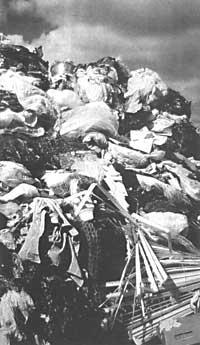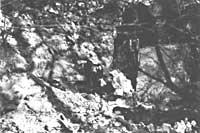As an example, the amount of garbage produced in France last year was: 18 million tons of household waste, 150 million tons of industrial waste, 2/4 million tons of highly toxic products and 400 million tons of agricultural waste. In these pages we will talk exclusively about household waste. However, other types of garbage will be analyzed in the following specimens. Before entering the topic we will give some data. First, the amount of kilos of garbage produced in some countries per person per year will be explained. USA | 744 | Australia 681 | Canada 635 | Norway 4G | Netherlands Total | Denmark Other | Switzerland 383 | United Kingdom 355 | Japan 344 | France 327 | Germany 318 | Sweden 317 | Spain 275 | Italy 263 | Austria 228 | Portugal 211 | Third world peoples | 100% | Since this data should be taken as an average, in capitals they are usually quite larger. For example, if the average data of France is 327 in Paris is higher than 400. Since the annual growth of these amounts is 2%/ 3%, we can estimate the growth potential of waste production by 2000. Next to the amount of garbage you need to consider the quality of the garbage. Although in its day most of the garbage was organic matter, with the improvement of the quality of life, the composition of the garbage has changed a lot. The current composition of waste in industrial territories can be seen in the following table: Organic matter 15% Powders 10% Metals 5% Glass and plastics 20% Cardboard and paper 40% Other 10%However, according to a study by the World Bank in 1982, the degree of development of peoples and the amount of organic matter from waste are inversely proportional. For example, the amount of organic waste in New York is 22%, that of Manila 43% and that of Jakarta 82%. And right now, what is done with the garbage? To date the garbage has had two solutions: burning and accumulation. These two solutions are applied in different percentages by different countries. Australia and Canada accumulate 90% of their waste, the US 80%, Spain and Germany 75%, France 65%, Japan 25% and Switzerland 20%. Although different by-products can be extracted from streams, the most common are energy recovery and fertilizers. Researchers estimate that 1 ton of household waste, 120 liters of fuel and 200 kg of coal equivalent. Although recycling certain substances is possible, paper and cardboard are the ones that recycle the most. The costs of recovering metal and PVC substances from streams are 30% higher, because the recycling of these substances is so low. The glasses, on the other hand, are increasingly recycled, since a product called calcín is extracted from glass, which saves energy. Despite people's growing concern about domestic garbage, in some places toxic waste problems have put society on alert. Deposit waste that is not burned or treated. The most commonly used options are pouring into the sea and surface deposition. Both are the best ways of contamination. The economic costs are very different depending on the route used. However, initial investments are amortized over time. For example, from the burning of 1 ton of household waste, energy – 1100 kWh –, purified water and gases – 70% – and waste – 30% can be extracted. 15% of these residues are recyclable scrap, 75% are glass compounds, inert compounds and non-ferrous metals and 10% are powders. But what is the problem of burning waste? First, the energy produced in the form of heat is not cumulative, so although this heat can be useful in winter, in summer its application is quite lower. One of the ways to stop this problem is the production of electricity. In Paris, for example, this application has been given to the garbage cooking centres in them. Thus, 120,000 megawatts were achieved in 1989. On the other hand, waste powders from streams pass into the atmosphere. Highly polluting heavy metals from these powders (lead, mercury, zinc, etc.) and contain hydrochloric acid (HCl) and, therefore, in places where garbage firing workshops are opened, people are not normally in accordance with this decision. For example, when in Holland they discovered dioxin in cow's milk around one of these crematoria a mess arose.  Trash has gone from organic matter to anything. The European Economic Association has tightened anti-pollution regulations and as a result, factories causing pollution can suffer serious fines and sanctions. There are three main ways for these powders not to pass into the atmosphere. Electrofilters are used first. In this way, the particles pass through an electric field and some go towards the positive pole (chlorides, sulphates) and others towards the negative pole (positively charged metal ions). Then they pass through permeable layer separators where particles of different diameters are left in different filters. Finally, there are multicyclones in which particles are separated by density due to centrifugal force. The best way to eliminate chlorine is by washing fumes with water. Therefore, the application of all the above mentioned systems would allow to control the pollution problem to a large extent. But we still have what we could call the “problem of the problem,” what to do with waste? In France, for example, every year the residues of glass and non-ferrous materials amount to 1.8 million tons, while powders and declining products add another 200,000 tons. In this amount of waste the main pollutants accumulate. What to do? Non-ferrous materials and glass can be used as a basis for new roads. With powders, on the contrary, the problem is more serious, since these cannot be thrown. A possible solution would be to bury, but not anywhere, as it can contaminate the waters and meadows of the area. Storage in salt mines can be the right solution, but from a certain amount the problem returns. In recent years, research on waste powders has intensified and most of them in a use the background method, that is, turn waste into “inert elements”. However, as the techniques invented so far are at the laboratory level, in the coming years you will not expect too much from them.  Many of our corners appear like this. Some companies after the treatment of waste powders introduce them into sacks and bury them. By proper drainage they collect liquid discharges from sacks, but they do not know what to do with them in the long term. There are other waste recycling techniques. One of these techniques separates corrupt materials from inerts, so that the former can be used in agriculture. For this purpose the organic matter is placed in oxidizing conditions. Then, through bacteria and mushrooms (penicillium, aspergillus), oxidized organic matter is transformed into humus, pasteurized by the heat produced by the biochemical reaction (60-70C). The compound formed after fifteen days can be used as fertilizer for the growth of mushrooms. After two months it can be used in viticulture and cultivation and within six months in the garden. An average of 1 ton of waste can be extracted 450 kg of compounds. Another 550 kg are burned or accumulated. The degree of impurity of compounds obtained by this or other similar means can be properly controlled, so it can be ensured that the quality of these compounds is good. The treatment of waste by this method makes it difficult to recycle raw materials (glass, plastic). These are molded, mixed and eventually burned or stacked. Therefore, the “selective collection of materials” takes on great importance to address this problem. In this collection the garbage should be deposited in two different containers. One easily recyclable (glass, plastic, paper, cardboard, metals) and the rest. This road is increasingly being used in many places, but an ideal solution has not yet been achieved, so the problem of garbage is increasingly serious. Used oils: Annual Black Tide Of the 450,000 tons of oil sold in France in 1989 only 135,000 were recovered. It is true that the rest has not poured everything into nature, but there are estimates that emissions are approximately 150,000 t. When oil tankers create a black tide they do not emit so many tons of oil into the sea, but their spills occasionally produce ecological killings. So, as our society pours almost every day the oil, every day an ecological massacre occurs, but many times we do not realize this fact. |
Mercury batteries: RISK
It is known that the heart of calculators, cameras, watches and some medical devices is mercury. Aspirin batteries contain between 1% and 30% mercury. The compound that forms when mercury is combined with water is extremely toxic. In Spain it is estimated that every year 30 tons of mercury are deposited in landfills. This mercury is combined with water, polluting rivers, meadows and animals. The solution responds to the recycling line, but a selective collection of waste is essential. | 
